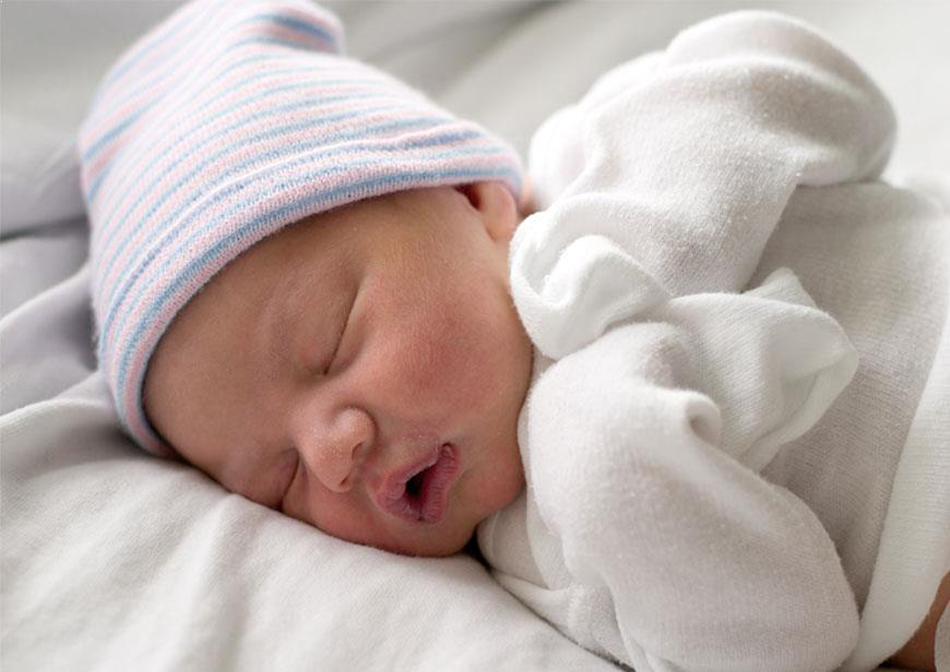ABC to Safe Sleeping for Babies

The high mortality rate in babies has been attributed mostly to placing them in hazardous sleeping conditions. Placing your baby in the ideal environment for sleep can help protect them from sudden infant death syndrome (also called SIDS) and other dangers.
What is the Ideal Amount of Sleep for your Baby?
Normally, newborns tend to sleep for about 16 hours a day, usually in intervals of 3 to 4 hours. This is because the baby needs to be fed every few hours, and this explains why it does not sleep for longer periods per time.
Babies generally tend to stay awake for just an hour or two, but with time, their bodies get synced with a sleep pattern and this is when they start sleeping for longer periods, even during the night.
What is the Ideal Sleeping Place for your Baby?
The ideal sleeping place for your baby is a bassinet or crib. Ensure that each baby is put in its own bassinet or crib, in the case of having multiple babies. Outlined below are some of the things you can do to ensure that your baby is sleeping safely:
Ensure that your baby sleeps on his back on a flat and stiff surface, such as a crib mattress covered with a close-fitting sheet. Make use of only the mattress that comes with the baby’s crib.
The mattress should sit in the crib in such a way that there will be no spaces between the mattress and the crib frame. Also, the shape of the mattress should remain stiff even when covered with a close-fitting sheet or mattress cover.
Do not sleep with your baby on the same bed. Sharing of beds among parents and babies is the prevalent cause of death in babies that are less than 3 months old. However, you might want to keep your baby’s crib close to your bed for proximity at night. You should not share beds with your baby for at least, the first six months after birth.
Make use of a safe bassinet, crib or play yard for your baby. Do not purchase cribs with drop-side rails, and do not try to fix a crib that has broken or missing parts. Keep items such as crib bumpers, loose beddings, toys and other soft objects away from your baby’s crib, as your baby could be in danger of getting trapped, strangled or suffocated.
How to Put Your Baby Safely to Sleep
In order to put your baby safely to sleep, you're advised to place your baby on its back during sleep from till after a year of its birth. This is essential because it is not safe for a baby to sleep on his side or tummy.
Put your baby to sleep in light sleep clothes. Also, get rid of strings and ties from the sleep clothes, and do not cover your babies head. Rather, make use of a blanket sleeper - which is an infant clothing used for sleeping and helps keep the baby warm without covering the head or face.
Ensure that the room's temperature is comfortable for you. Your baby may be overheated if it is sweating or feels hot in the chest.
Does Having a Bedtime Routine Help your Baby Sleep?
Having a bedtime routine helps your baby to sleep. Although the sleep schedules of newborns change over time, adhering to a specific routine helps to ease bedtime for you and your baby. The ideal time to fix a bedtime routine is when your baby is around 4 to 6 months old. Follow the tips below to get your baby ready for bedtime:
Whenever it's bedtime, stop every form of playful activities. Give your baby a warm bath, and stroke its back softly thereafter. You can give it a pacifier, sing or play soft music, or even read your baby a bedtime story.
Adhere strictly to the sleep routine of the baby at all times. You should plan ahead if your baby’s routine may need a temporary change, such as when you want to travel out of town, or while attending family functions. In this case, change the bed time the best you can but try to get back to its schedule and routine as soon as you're back.
As mentioned earlier, the high mortality rate in newborns occurs due to sleep-related causes. However, you can prevent such occurrences by applying the ABCs of Safe Sleep. This is simply the summary of the steps to follow when it's time for an infant to sleep.
'A' stands for Alone which means that the baby needs to sleep alone always.
'B' stands for on the baby's Back, which means that it should be placed to sleep on its back, always.
'C' stands for Crib, which implies that you have to put your child to sleep in a crib that has only a stiff mattress and close-fitting sheets.
